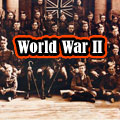The Calgary Highlanders at the Walcheren Causeway:
October, 1944
David J. Bercuson
Reprinted with permission of the author and publisher of For King and Country: Alberta in the Second World War Ellis, Hees and Sellar discovered that A Company was without commissioned officers; once back at battalion HQ Hees, a staff officer with no experience in the field, volunteered to lead them. Ellis received Megill's permission and Sellar outfitted him with a helmet and a Sten gun. Then Ellis led him and the artillery observation officer, Captain Newman, who had also volunteered, out to the A Company positions.30 Hees was shot in the arm shortly after, but led the company for the remainder of its time on the causeway. Ellis later said of Hees: "It took a lot of guts for a guy who had never been in action to go into a hell-hole like that one."31
Ellis, Hees and Sellar discovered that A Company was without commissioned officers; once back at battalion HQ Hees, a staff officer with no experience in the field, volunteered to lead them. Ellis received Megill's permission and Sellar outfitted him with a helmet and a Sten gun. Then Ellis led him and the artillery observation officer, Captain Newman, who had also volunteered, out to the A Company positions.30 Hees was shot in the arm shortly after, but led the company for the remainder of its time on the causeway. Ellis later said of Hees: "It took a lot of guts for a guy who had never been in action to go into a hell-hole like that one."31
Ellis returned from his second trip on the causeway at about 1730 and went to Megill's tactical HQ to discuss the situation. The problems with A and B Companies had postponed the Maisonneuve advance; now Megill told Ellis to hold "until Div[ision] decided what to do."32 At just about that time, however, the Germans at the western end of the causeway launched a counter-attack aimed at the southern end of the D Company perimeter. Armed with flamethrowers, they threatened to cut Clarke's men completely off; he ordered a withdrawal. Across the salt marsh battalion HQ could see the Germans advancing, and called down tank and artillery fire to help, but they still had no radio contact with B Company. As B Company withdrew, D Company pulled back as well.33
Sergeant Emile Jean Laloge was with 18 Platoon of D Company when the counter-attack began. As German grenades sailed toward his men, he picked them up and threw them back at the Germans. When one of his Bren gunners was killed and the gun damaged, Laloge repaired the gun and opened fire at the advancing Germans. When Laloge yelled for PIAT [projector, infantry, anti-tank] fire and found out that the PIAT man was wounded, he fired that too at the enemy. His bravery and leadership earned him the Distinguished Conduct Medal.34 Another man decorated for his role in defending against the counter-attack was L'Cpl. Richard G. Wolfe. In charge of a 2" mortar, Wolfe stayed behind to give covering fire to B Company as it pulled back. Time after time his well placed mortar bombs held up the German advance until he was captured. A day or two later the Germans sent Wolfe back to the Canadian lines with a request that their hospital not be shelled.35 Lt. John Moffat, Clarke's second in command on the causeway, tried to move his men to better firing positions as they withdrew, but he was shot dead.36 Band D Companies first pulled back about 300 metres from the Walcheren end of the causeway, then were withdrawn completely by Ellis. A Company and C Company remained on the causeway in the vicinity of the crater. By the time they pulled out, Band D companies were down to about 22 men each.
The Calgary Highlanders had made it across the causeway but had not been able to hold. In the end, it did not matter to the overall outcome of the battle because the fate of the German garrison on Walcheren was sealed anyway. The British landing at Flushing was a complete success and although the assault on Westkapelle was a near disaster, German resistance soon began to crumble; as the British troops drove south and east along the rim of the flooded island, the German troops between them and the causeway were held in an ever tightening grip.
Despite the success of the landings, Foulkes insisted that Keefler and Megill continue their effort to get across the causeway and as night fell, Megill laid plans for one more attack, this time by the Maisonneuve. At first Megill envisioned a full scale assault supported by a massive artillery and mortar barrage. Then, at the behest of Divisional HQ, plans were changed again. The Maisonneuve would send only two companies forward and attack for about one hour and would then be relieved by the 157th Brigade of the 52nd (Lowland) Division.37 At 0400 the barrage and the assault began. The last Highlanders pulled back, taking their casualties with them, as the Maisonneuve advanced. One Maisonneuve company made it as far as 200 metres from the Walcheren end of the causeway before it was stopped. It would not finally leave that killing ground until early afternoon when it was relieved by the Scottish troops.
The story of the causeway does not end there. Ordered by Foulkes to make yet another assault, Maj .-Gen. Hakewell-Smith, the GOC of the 52nd (Lowland) Division, refused and sought permission to find another way. Eventually he did when his scouts discovered a place where his troops could walk across the salt marsh at night. They outflanked the Germans at the end of the causeway in the early morning hours of 3 November and quickly bypassed them, securing the western end of the causeway. Then they advanced westward. The Germans were trapped. The last shots on Walcheren Island were fired towards the evening of 8 November and the Battle for the Scheldt ended. By then the Highlanders and the rest of the 2nd Canadian Infantry Division had been pulled out of the battle and were headed for Nijmegen, Holland where they would spend most of the winter.
In the Battle of the Scheldt Estuary, the Calgary Highlanders lost 107 men killed and another 327 wounded; nineteen of the dead and 45 of the wounded fell at the Walcheren causeway. The last word on this epic battle in regimental history should be reserved for the man who commanded the Highlanders there, Ross Ellis: "The actual battle itself in which the Calgary Highlanders took part didn't develop a great deal. The main accomplishment we got out of there was that we got as many as we could out alive."38
Notes
30. W.D. Whitaker interview with Ross Ellis, 21 August, 1982, courtesy of W.D. Whitaker; Williams to Bercuson, March, 1992. Both documents are in the possession of the author.
31. Ford to Bercuson, 27 November, 1993.
32. WD, CH, 1/11/44.
33. DND Records, Vol. 10985, File 265.11, "The capture of Zuid Beveland and operations to secure a bridgehead on Walcheren Island."
34. Glenbow Archives, Calgary Highlanders Collection, Box 4, File 41, medal citation for E.J. Laloge.
35. Ibid., medal citation for R.G. Wolfe.
36. Ibid., medal citation for J.D. Moffat.
37. DND Records, Vol. 10985, File 265.011, "The capture of Zuid Beveland and operations to secure a bridgehead on Walcheren Island."
38. W.D. Whitaker interview with Ross Ellis, 21 August, 1982, courtesy of W.D. Whitaker, in the possession of the author.








